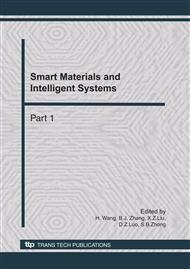p.414
p.419
p.424
p.428
p.433
p.439
p.444
p.448
p.452
The Simulation Study Based on Multi-Agents of Mobile Market
Abstract:
The holistic simulation study is based on multi-agents to stimulate the behavior of mobile communication. The paper intents to understand the effect of the regulation on the market of mobile communication on the methodology of complex adaptive system simulation in swarm platform. The simulation was on the condition of mimic surrounding. The simulation program includes four classes of Swarm objectives. Results reveal that reasonable, ordered and co-coordinated communication market is on the state of the regulatory of duopoly. Based on the multiple agents modeling on the platform of swarm software, we engendered an artificial mimic mobile market to imitate the mobile telecommunication market. The effect of regulatory rules can be adjusted as the time going by. The best effect appeared at the middle stage of the policy in practice.
Info:
Periodical:
Pages:
433-438
Citation:
Online since:
October 2010
Price:
Сopyright:
© 2011 Trans Tech Publications Ltd. All Rights Reserved
Share:
Citation:


